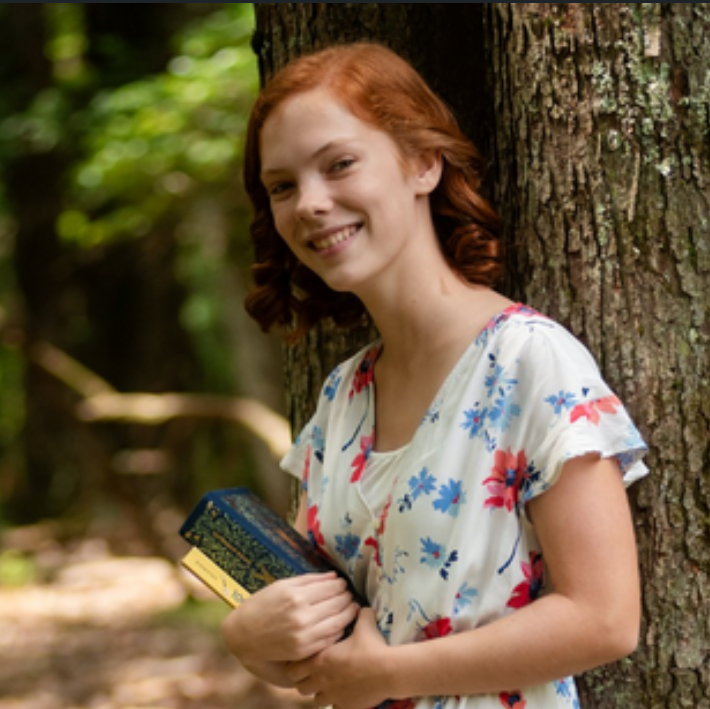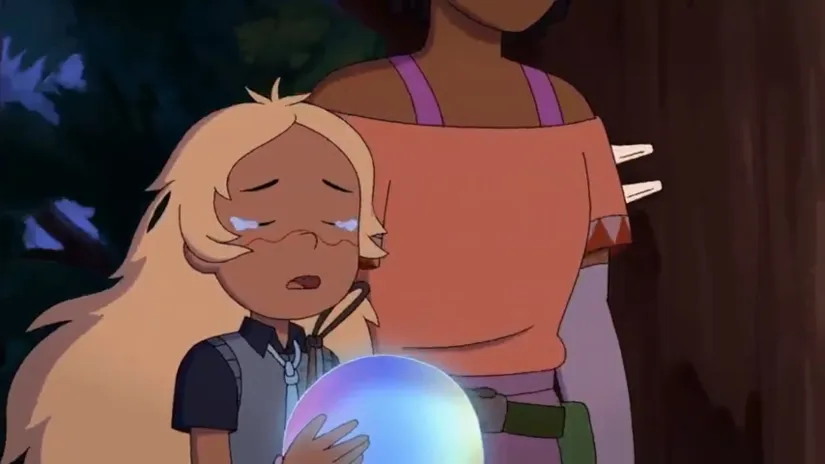The more I think about it, the more I’m convinced that there aren’t enough sad moments in fiction, especially when a character has died and the rest of the cast is dealing with the grief. We might get a short glimpse of their funeral, or even a line or two of dialogue that shows the protagonist’s thoughts, but more often than not we don’t get either one. More commonly, the reader is left to grieve on their own time.
And to be fair, this is understandable. Sad scenes are hard to write. Especially in action-adventure stories, it can often seem like there isn’t time for them. And even if there is time, it is incredibly difficult to write a scene where a character is just… sad. While happiness, anger, fear, and love all tend to make someone more active, sadness tends to be the opposite, which makes writing those scenes difficult for action-adventure books, movies, and TV shows. It seems like you’re messing up the pace, or slowing your story if you have a character just sit and be… sad.
While Sophia wrote an entire article on how to write those sad moments well, so far on the blog we haven’t talked much about why they are so important to include in the first place. So, today, we’re going to be looking at the cartoon anthology Infinity Train to investigate exactly what makes sad moments so important.
Infinity Train
Infinity Train is a cartoon anthology centering around an other-wordly train that teleports people from our world onto its cars to help them address a flaw that is beginning to impact their life. Each car is massive, with some containing entire biomes, complex puzzles, or sentient life that have created advanced and highly organized civilizations. The first few seasons follow a fairly simple pattern: we meet a new character with an apparent flaw, they are teleported onto the train, forced to address that flaw, and finally able to go home at the end of the season.
But the third season is somewhat different.
This time, the season opens on the train, where we are introduced to a reckless and occasionally violent gang of children run by two teenagers, Grace and Simon, who, instead of trying to get off the train, have decided they never want to leave. They formed a gang who travel through car after car, destroying and pillaging everything in sight because they believe that the creatures that live on the train — which they call “the Null” — are worthless.
But then Grace and Simon are separated from the others and stranded with a young girl named Hazel and her companion Tuba, a Null mother gorilla who has adopted her after she lost her own children. Grace and Simon recruit Hazel and decide to travel back together. Along the way, Grace and Simon try to make Hazel see that the “Null” don’t matter without offending her or Tuba. But Hazel remains blissfully ignorant, trusting Tuba implicitly and treating her like a real mother. The two of them do everything together, from talking to singing the lullaby Tuba wrote for her own children, and nothing Grace can say seems to be able to change that.
Finally, Simon has enough. Tuba is a liability that he doesn’t have time for, and so he pushes her off the top of a train car, killing her. Grace is outraged on Hazel’s behalf and Hazel, who doesn’t know how Tuba died, is heartbroken.
Trying to make it up to her without telling her the truth, Grace agrees to attend a sort of funeral for Tuba with Hazel. And so the two find a train car full of trees and sit on one of the highest branches, watching the sun rise as they remember Tuba’s life. When neither of them have anything else to say, Hazel begins singing the lullaby she and Tuba sang together every day.
As Hazel sings, tears begin pouring down Grace’s cheeks, and she begins to understand, perhaps for the first time, that the Null are not as meaningless as she thought.
The Power of Sad Moments
I understand why it’s so easy for so many authors to skip over writing sad moments. Often it seems like there’s nothing to do with them. How can they write an entire scene where a character just sits and is… sad? The debilitating effects of grief unfortunately make scenes like this seem very uninteresting from the writer’s perspective. They have essentially no action and rarely land between being cheerfully brisk or wearyingly long (at least from a writer’s perspective). And the scenes that do have action tend to be too fast-paced to deal with grief. Our protagonist can’t pause in the middle of the climax to mourn her friends, or she might get killed herself. On top of that, shouldn’t the very concept of whatever sad thing just happened be enough? Can’t your readers mourn on their own? While other emotions — like anger and fear — might need specific pictures to elicit the same emotion in their readers, sadness can be achieved by just having something sad happen. So why go through all the work anyway?
In short, you should go through the effort of writing a scene where your characters grieve because you aren’t just making your reader feel a certain way. You’re telling a story through the lens of a character. That means your readers should experience events as they are framed by your protagonist’s thoughts, perspective, and emotions. Although sad events can be powerful without a moment to show how your character is grieving, they become so much more powerful when your readers get to grieve alongside your characters. When they get to hear their thoughts, bring up old memories, and reflect on grief together, the bond between your characters and your readers becomes that much stronger.
And after all, your characters are the ones who feel the death the most. Writing so that your readers can mourn through your characters’ perspective allows them to feel the grief in a uniquely intimate way. So why wouldn’t you put in the extra effort to write scenes like this one? Your readers have experienced every event, every emotion, along with your character. Sadness and grief shouldn’t be the exception.
The question remains, of course, how to write scenes like this well. And although writing moments like this that strike the delicate balance between being sappy or flippant can be extremely difficult (especially when looking at your own writing), there are a few things you can do to make sure these scenes hit especially hard.
The most important one is to give your character’s something to hold onto while they’re grieving. Sophia wrote an entire article on how to do this well, and one of the best aspects of this technique is that it gives your characters something to do while they grieve. It gives them an action to take or a memory to bring up that gives both you, as the writer, something to write about and your readers a crystal-clear picture of the grief your characters are experiencing.
In Infinity Train, Hazel and Tuba sing their ridiculous lullaby all the time. The viewer doesn’t think much of it because it isn’t especially meaningful and doesn’t add any to the plot. It’s just another demonstration of how close the two are.
But that song was intentional, and it let the viewers grieve with the characters in a unique way by giving them something to hold onto as they mourn.
While Hazel and Grace sit on the tree branch, watching the sunrise, with no idea how to express their sadness, Hazel begins singing.
“Don’t be a worry baby,
“No need to hurry, baby,
“When you’re with me
“Don’t run way up ahead,
“Take the long way instead.
“There’s lots to see
“When you slow down to listen
“And you won’t go a-missin’
“Chances to play.
“We’ll always have tomorrow
“No need to let it borrow
“Time from today…
“Just take it easy-peasy,
“My little lemon squeezy.
“You’re always with me.”
As she sings, the viewer is hit with the full impact of Tuba’s death for the first time. This is because that was the first time we, like Grace, were truly able to feel the effects of her death from Hazel’s perspective. Watching a character who we love die is objectively sad. Tuba’s death was no different. But Hazel didn’t just lose a character, she lost her mother, the only parental figure in her life, and the only semblance of home she’s had for as long as she can remember. Without a doubt, she experienced Tuba’s death in a more poignant way than we, as the viewers, could on our own.
From our perspective, Tuba was just a happy cartoon gorilla with an interesting history that was now… gone. We were horrified at Simon’s actions and sad on Hazel’s behalf, but her death was far from being one of the most crushing in the history of fiction.
But the writers didn’t let it stay that way.
They used this scene to allow the viewer to experience Tuba’s death as Hazel did — and everything we thought and felt about her death changed. With this scene, we were able to sit with Hazel and feel a part of her grief at losing her home, her friend, and her mother. We were able to understand just how much Tuba meant to her, both in life and death. We didn’t just mourn on our own time, considering the story throughout our day. We got to mourn with the characters who were bringing us through this story, and it made Tuba’s funeral the most impactful scene in the entire show.
It’s because we got to experience her death with the people who knew her best that Tuba’s life and death left such an impact. It’s because the writers were not afraid of showing us their characters’ sadness that Tuba meant so much. It’s because we had a chance to mourn with the characters that created the heart and soul of this story that this scene — and Tuba’s life — became unforgettable. We become that much closer to the characters and feel the coming pains and triumphs all the more strongly.
All because the writers let us sit for a moment, just like we were there with those characters on a tree branch, watching a sunrise, and grieving the loss of an individual who had brought us all along this journey — together.



Let us know in the comments:
What stories you’ve watched or read that had scenes where their characters mourned? What characters do you wish had gotten a scene like this one?


Hi! My name is Mara, and I’m a Christian artist, violinist, and blogger. I remember the day that I decided that I would learn something new about what makes a good story from every book I picked up — whether it was good, bad, or a mixture of both. I use this blog as a way of sharing some of the tips and tricks I’ve learned, and highlight which books, cartoons, and movies have taught me the most about writing an awesome story.


The first half of Season 2, Episode 16 of The Bad Batch, right after *SPOILER CENSOR*, comes to mind.
One character in particular mentioned several times during the show that he hated solitude (for good reason), and yet he was the one sitting, all alone, staring out the window and occasionally glancing at the empty chair beside him, just remembering….
Have you ever considered writing an article about stories without grief. I feel like people think that a good story needs some sort of traumatic event at the beginning or in the climax, and I really think that’s not the case. There are so many different emotions that can carry a climax: Anger, disappointment, fear.
Now, I’ve crafted (not necessary written 🙄) several stories with grief as a focal theme, but my personal favorite ‘carrying emotion’ is concern, usually towards other characters. If we lose them, it feels that much worse (Karen Traviss’ “No Prisoners” comes to mind, the grieving moments were good in that one); but sometimes we get them back. Honestly, those kind of stories resonate with me more than most other stories.
Not exactly. There are lots of stories that don’t deal directly with grief, and while I agree that you shouldn’t just add a death because it feels like it should happen at the climax (we have way too many of those) I think a lot of authors do it to show how high the stakes are for their characters, demonstrate their theme, or (like they did in Infinity Train) progress a character’s arc. If none of those things are happening, there probably shouldn’t be a death. But I would take this on more of a case-by-case basis (and yes, I have an article in the works on this topic!) If writers keep the above conditions in mind, character deaths will either fit in naturally or be cut because they aren’t necessary. Do you mean like a “how to write a good, high-tension story without a death?” Because that could definitely make an interesting article!
A few examples of characters mourning that I can think of are when Gandalf faces the Balrog in Moria and is presumed dead by the rest of the Fellowship, when Boromir is killed, when Merry and Pippin are thought to be dead by Aragorn, Gimli, and Legolas, and when Frodo departs for the Grey Havens. These scenes add a lot to the story, as they show how much the mourned characters were loved and missed by the mourners.